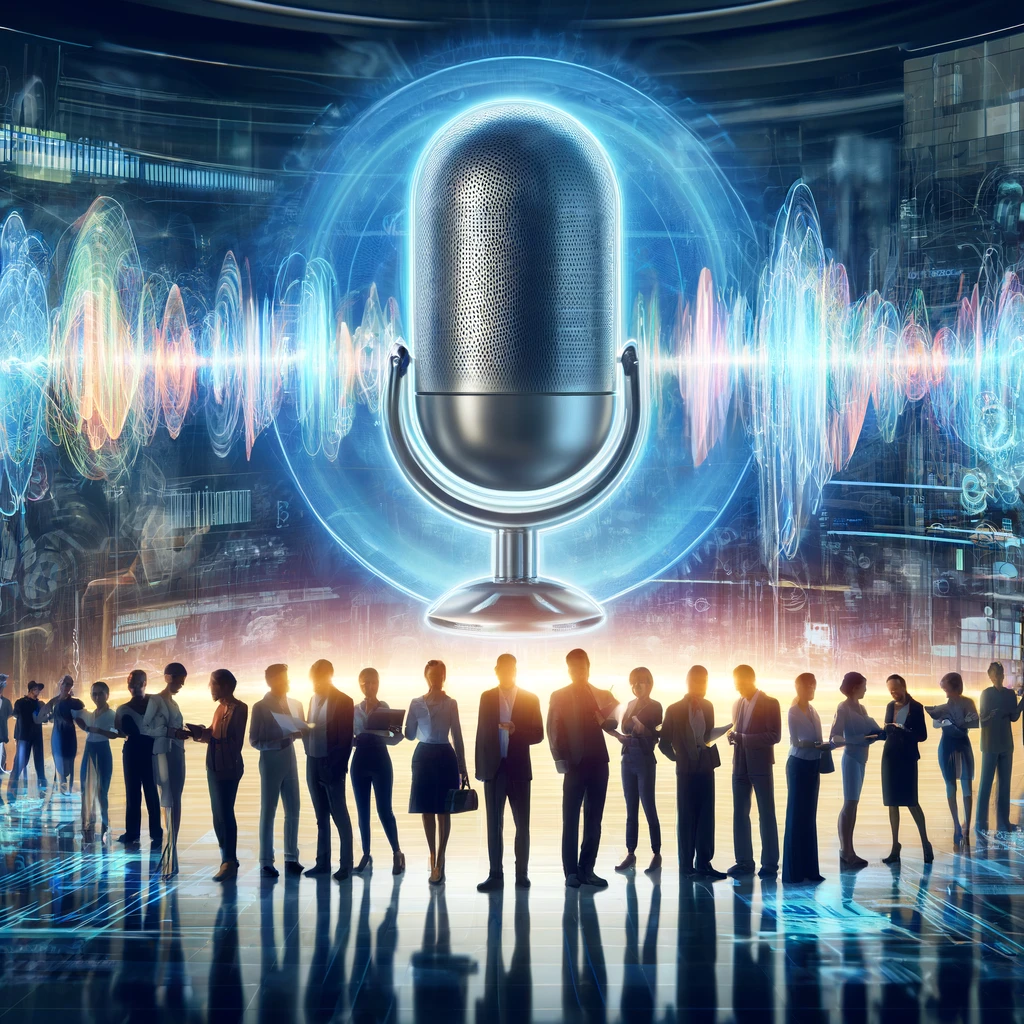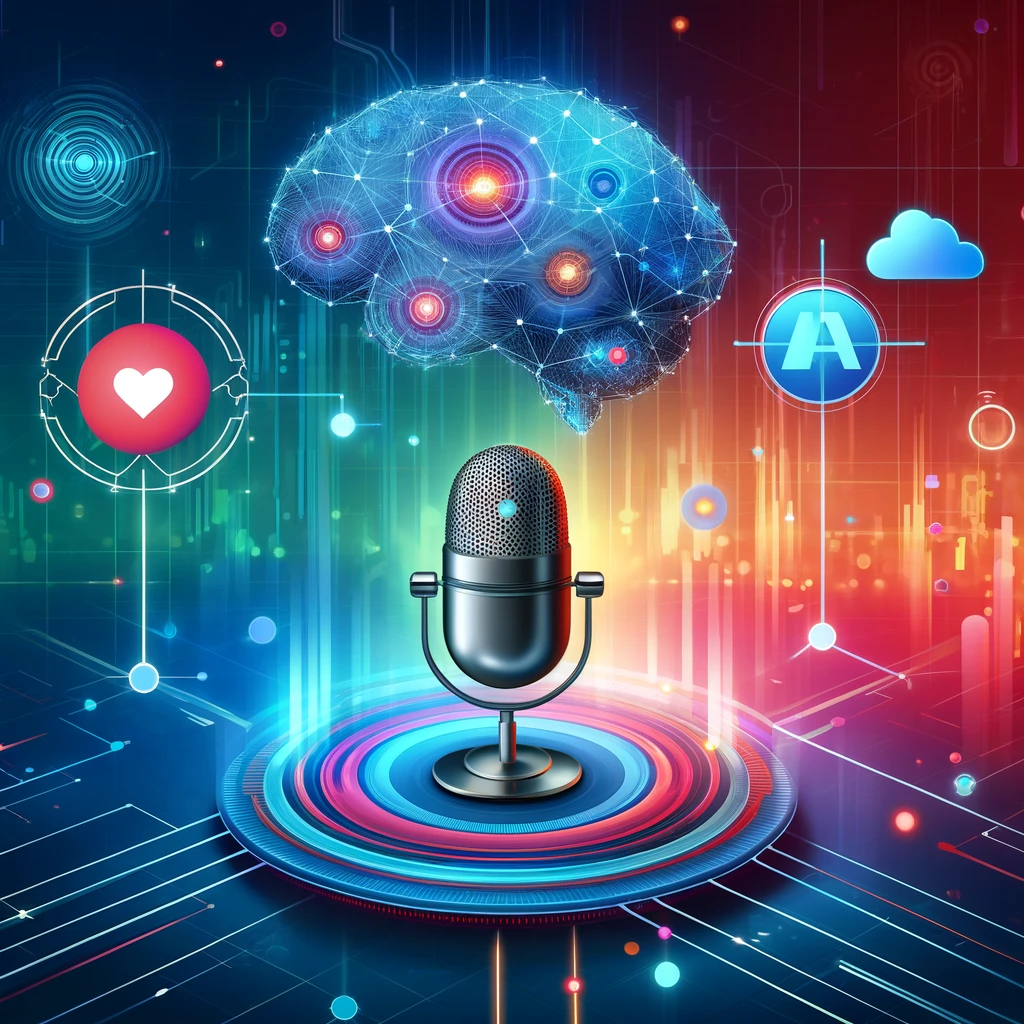Text-to-Speech (TTS) and Automatic Speech Recognition (ASR) Applications
Introduction
Incorporating voice input/output for large language models (LLMs) has immense potential for various organizations, although it has not kept pace with text-based modalities. The integration of LLMs with text-to-speech (TTS) technology represents a significant advancement in the voice technology landscape. These developments not only enhance the digital experience but also make daily technology interactions more intuitive and accessible. Acuitize AI supports these innovations and is dedicated to developing custom speech-based solutions that enhance user interaction, drive business innovation, and increase personal convenience. The advancements in TTS and ASR technologies are poised to revolutionize numerous industries by making digital interactions more natural and efficient. In customer service, for example, TTS can create more human-like interactions, while ASR improves system responsiveness and accuracy. These technologies are becoming essential in educational tools, healthcare communications, and personal devices, fostering a seamless, efficient, and accessible communication ecosystem.

Utilizing LLMs for Speech Recognition
LLMs can be employed in several key ways for speech recognition: In first-pass recognition the LLM generates a list of possible transcriptions for audio, which a traditional speech recognition system, then refines to select the most likely transcription. In second-pass rescoring the LLM is used to rescore the output of a traditional speech recognition system, thus improving the selection of the final transcription.
Benefits of LLMs in Speech Recognition
LLMs can boost the accuracy of speech recognition systems by up to 20% in noisy environments. There is also robustness to accents. LLMs are better at handling accents due to training on a diverse dataset of text from various speakers. LLMs exhibit high scalability for managing large volumes of audio data, making them ideal for applications like call centers.
Enhanced Speech Quality through Context-Aware Modeling
Modern TTS systems are characterized by their ability to produce clear, contextually aware speech. The Context-Aware Contrastive Language-Audio Pre-training (CA-CLAP) model significantly enhances speech naturalness by adapting audio prompts based on textual context, making digital voices more relatable and engaging. The integration of retrieval-augmented generation (RAG) techniques allows these models to adapt dynamically to the user’s immediate context, improving the relevance and expressiveness of synthesized speech, especially in emotionally nuanced environments like storytelling apps or interactive customer support.
Personalization with Prompt-Based Speech Synthesis
A major breakthrough in TTS is the capability for personalization through prompt-based synthesis. Systems can clone voices and reflect the speaker’s style and nuances using brief audio clips or “prompts.” Acuitize AI leverages this technology to offer customized services that facilitate dynamic and tailored interactions across various platforms. This approach not only preserves the original tone and style in applications like audiobooks but also allows users to customize voice assistants to their preferences, enhancing comfort and usability.
The Synergy of TTS and Automatic Speech Recognition (ASR)
The advancements in TTS complement progress in ASR, where LLMs enhance understanding and contextual relevance. Traditionally, ASR systems needed extensive datasets, but LLMs reduce this need by generating synthetic speech data, allowing rapid deployment in new domains like multilingual customer support and interactive educational platforms.
Leveraging Pre-trained Models for Speech Recognition
Pre-trained models, having been trained on vast datasets, bring extensive linguistic knowledge, speeding up development and improving results. Fine-tuning these models to specific tasks enhances their performance on targeted inputs, while combining transfer learning with fine-tuning optimizes their adaptability to specific speech characteristics. Adapting to domain-specific vocabulary through fine-tuning and data augmentation techniques results in a more robust and adaptive speech recognition system.
Usage Areas
Language Translation – This area has witnessed a significant boost with the aid of large language models. Real-time translation of spoken language has become more reliable and precise, dismantling language barriers and fostering global communication. The seamless communication between individuals speaking different languages has strengthened collaboration and understanding across diverse cultures. Voice Assistants – Large language models play a pivotal role in powering popular voice assistants like Siri, Alexa, and Google Assistant. By leveraging these models, voice assistants can understand and respond to user queries more intelligently and naturally. The sophisticated language processing capabilities of large language models enable voice assistants to comprehend context and provide contextually relevant answers, making interactions with these virtual assistants seamless and intuitive. We can build customized solutions for you. Conversational Medical Assistants – Approximately 68 million adults in the USA have two or more chronic diseases, demanding a tenfold increase in care capacity. LLM-powered conversational AI assistants can enhance telemedicine by understanding and responding to patient queries, providing medication reminders, and offering general health information to improve patient engagement. Conversational agents can also be used for mental support. An empathetic and reassuring voice can have much more impact than a stream of text. Conversational Educational Agents – Key areas where conversational agents can be beneficial include intelligent tutoring, training, and conversational format testing. Transcription Services – Transcribing audio and video content has become significantly easier and more accurate with the assistance of large language models. Professionals such as journalists, content creators, and researchers benefit from the precision and efficiency that these models bring to the transcription process. Large language models excel in converting spoken words into written text, streamlining content creation and ensuring the delivery of accessible and inclusive content for individuals with hearing impairments. Customer Service Centers – In the customer service domain, large language models have transformed call centers’ operations. By assisting in understanding customer inquiries and providing appropriate responses, these models have revolutionized customer interactions. The incorporation of large language models has resulted in more personalized and effective customer support, ultimately leading to heightened levels of customer satisfaction and loyalty. Accessibility – Large language models have played a significant role in improving accessibility for individuals with speech and hearing impairments. By powering assistive technologies with advanced speech recognition capabilities, these models empower users to interact with technology and communicate effectively, regardless of their abilities. This newfound accessibility enhances independence and inclusivity in various aspects of life.
Conclusion
As digital technology advances, the role of TTS and ASR will increasingly become central in our interactions with technology. The potential to drive engagement through natural, context-aware, and personalized voice experiences is vast. Acuitize AI remains committed to implementing these technologies, and building sophisticated TTS and ASR solutions that leverage LLMs to transform how businesses and consumers interact with voice-enabled technologies. Engage with Acuitize AI to discover how we can use TTS and ASR technology to elevate your digital solutions, making every interaction uniquely effective and genuinely engaging.


